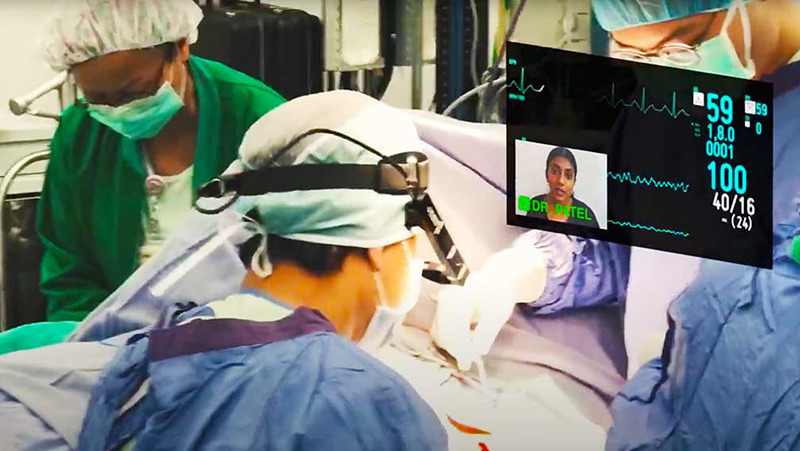Since inception, wearable devices have been playing an important role in the medical field. They have been extensively used in remote monitoring and telemedicine. Now, surgery is another field where wearables are making their mark.
Related FundamentalVR Integrates Groundbreaking HaptX Gloves on its Fundamental Surgery Platform
Assistance
Assistance is when wearables are used to replace physical tasks encountered during surgery. This can include tasks performed while in a sterile environment or tasks in clinic. An example of surgical task replacement would be the use of an arm-mounted device to allow gesture control of a PACS system to allow synchronized review of cross-sectional imaging at the time of surgery without breaking sterility. Another example from the clinic would be the capture of objective range-of-motion data utilizing sensors integrated into a hand-held device that the surgeon carries.
Pixee, a France-based medical company, completed the first total knee replacement AR navigation system, solely guided by the Vuzix M400 AR Smart Glasses. The Vuzix M400 Smart Glasses running the Knee+ solution provided real time navigation throughout the surgery, displaying essential augmented reality information in the surgeon’s field of view.
Augmentation
Augmentation during surgery is the real-time provision of information to the surgeon during clinical or surgical procedures. A heads-up display of vital signs could be used during cardiac surgery, which allows recognition of specific instruments by operating room staff unfamiliar with complex equipment sets such as those used in orthopedic trauma surgery through visual recognition software. Diagnostic imaging such as a CT scan could be superimposed helping surgeons in the operating room perform image guided surgery.

Assessment
Wearables are being used for objectively measure the disease severity and it can be extended to be used during surgery. For example, a wearable device can track breathing and sleep patterns in patients before and after surgery to correct a deviated septum. This type of analysis has already been proposed in chronic obstructive lung disease monitoring and stroke recovery.
Postoperative
Wearable sensors enhance patient safety. Currently, after a surgery has been performed, the patient in the surgical ward is left unmonitored leaving them vulnerable to post-operative side effects. Using a wearable device to continuously monitor the patient can lower the risks of complications and potentially help the patient recover faster.
Related Borns, AI-Powered Minimally Invasive Surgery Has Huge Prospects in Healthcare
Risks and benefits of using wearables during surgery
Wearables bring both benefits and risks to the operating room. If properly used, they can greatly enhance accuracy and efficiency of a surgery. The surgical team can be helped by a wearable device for the real-time assessment of the patient. However, if they aren’t trained properly on how to handle a wearable, the results could be opposite.












